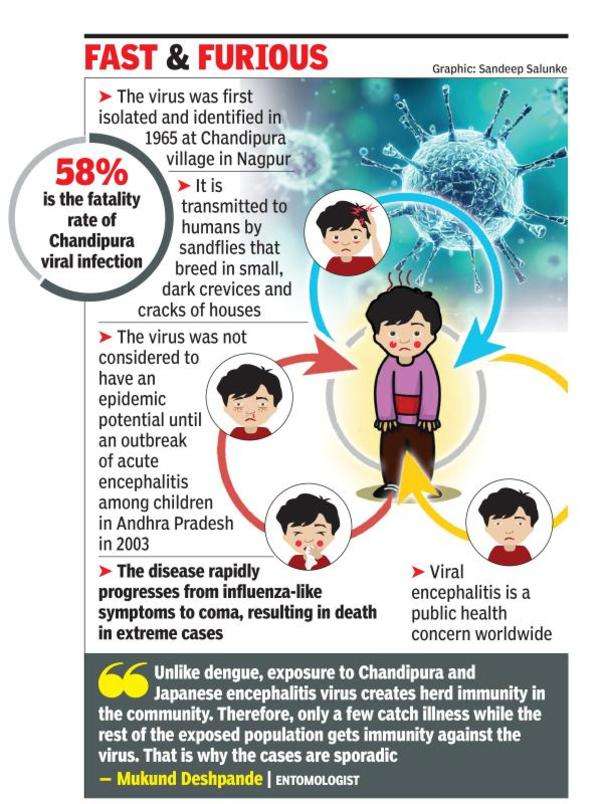Context:
In a recent study conducted by the National Institute of Virology (NIV), Pune, the antiviral drug Favipiravir was found to offer substantial protection against the Chandipura virus in preclinical trials.
About the Chandipura Virus:
The Chandipura virus (CHPV), an emerging encephalitic virus endemic to central India was first identified in 1965 from febrile cases in Maharashtra.
· It is a member of the Rhabdoviridae family and is believed to be transmitted by arthropod vectors, most likely sand flies.
· The The virus poses a major threat to the paediatric population, particularly children under 15 years of age, primarily affecting children and presents with high fever, convulsions, and in severe cases, progresses rapidly to encephalitis, coma, and death.
The World Health Organization (WHO) termed this the largest outbreak in the past two decades, with 64 laboratory-confirmed cases—61 of them reported from Gujarat and the rest from adjoining areas of Maharashtra.
A major outbreak occurred in 2003 in what Andhra Pradesh was then, affecting over 300 children with a fatality rate exceeding 50%.
Between 2003 and 2007, cases were also reported from the Vidarbha region of Maharashtra, Telangana, and Gujarat. Sporadic cases have continued in these endemic regions since then, but the 2024 outbreak marks a major resurgence.
About Favipiravir:
Favipiravir is a generic drug used in the treatment against influenza viruses and has been approved in Japan for the treatment of novel influenza virus infections.
It is a promising candidate against CHPV. Laboratory trials on mice have shown that Favipiravir can reduce the viral load and improve survival rates in infected animals.
Preventive Measures and Public Health Response:
- At present, there is no specific antiviral drug approved for CHPV infections. Patients are treated symptomatically, and clinical management is largely supportive. The identification of Favipiravir as a potential therapeutic mark a significant step toward developing targeted treatment options.
- Alongside antiviral development, efforts are underway to develop a vaccine candidate against CHPV. Given the high mortality among children and the absence of preventive or curative options, vaccine development is seen as a critical long-term strategy.
- Currently, the only available preventive strategies include vector control, improved hygiene, and public awareness.
- Since the virus is likely transmitted through sand flies, controlling breeding grounds, using insecticides, and educating communities in endemic areas are essential public health measures.
Conclusion:
The resurgence of Chandipura virus underscores the threat posed by lesser known but highly fatal viral infections in India. While the virus remains confined to certain regions, its potential for high paediatric mortality demands urgent attention. The identification of Favipiravir as a potential treatment and progress in vaccine research offer new hope in combating this neglected virus.







